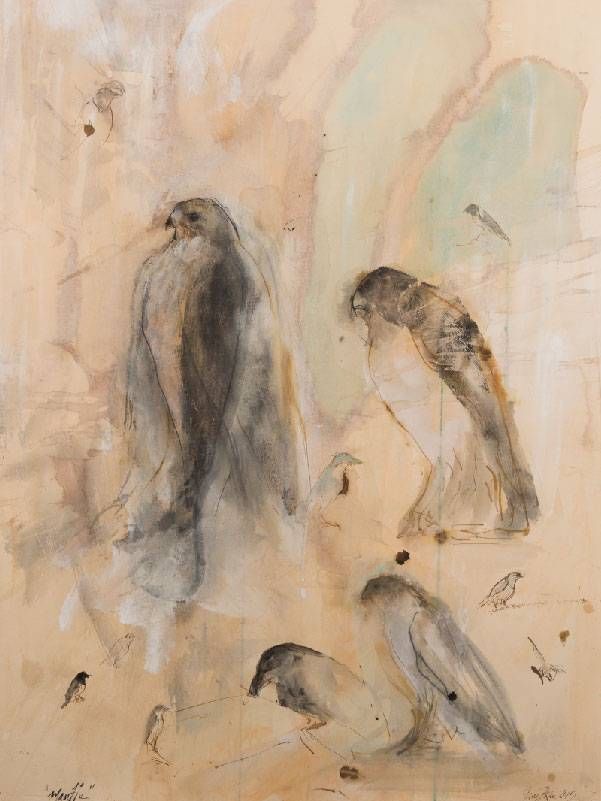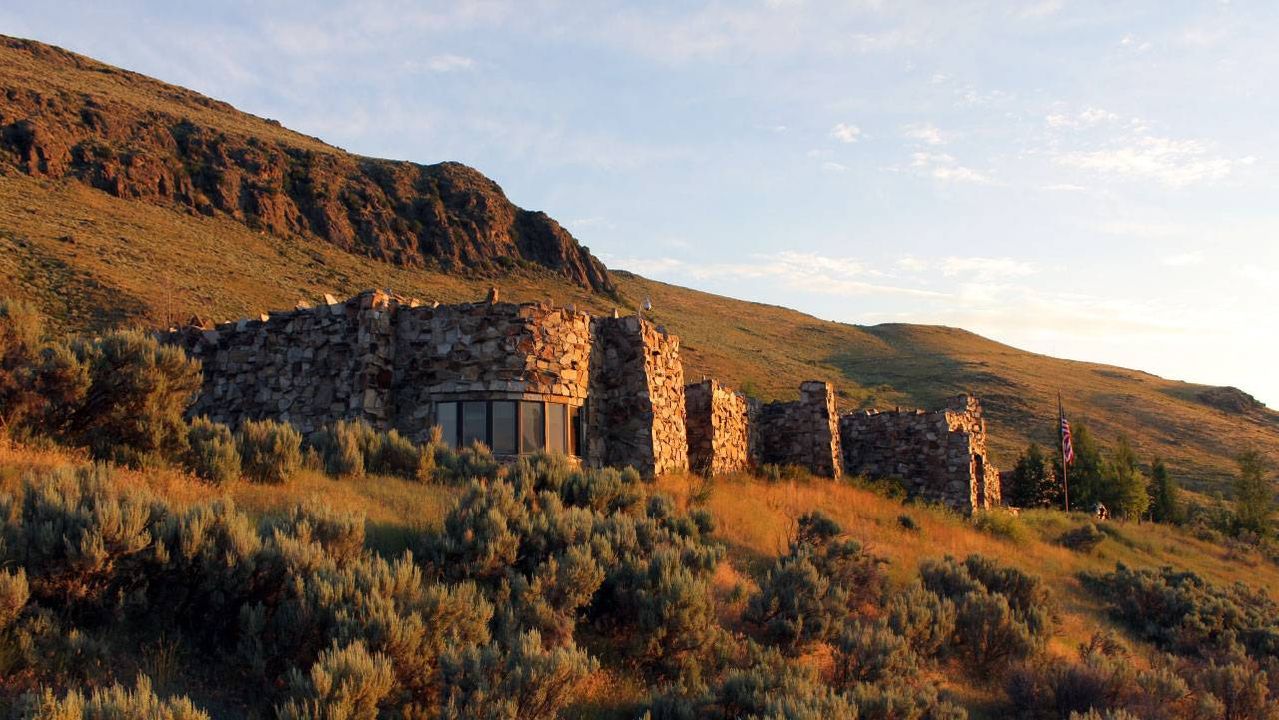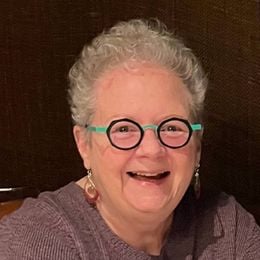National Museum of Wildlife Art Spotlights Women Artists
This museum outside Jackson, Wyoming, offers much more than 'cowboy art'
Rosa Bonheur, a French artist and sculptor, achieved international acclaim in 1853 for "The Horse Fair," a painting Queen Victoria of England particularly liked and that now hangs in the Metropolitan Museum of Art in New York City. Bonheur's work was included at the 1893 World's Columbian Exposition in Chicago, Illinois, and was frequently exhibited at the Paris Salon. In 1865, she received the French Legion of Honour award.
Yet you may never have heard of Rosa Bonheur. Why is that?

"Though she was one of the most incredible artists working during the nineteenth century — and one of the most popular — writers of art history routinely have left out women artists, underserving all of them," said Tammi Hanawalt, curator of art at the National Museum of Wildlife Art.
The museum and Hanawalt are righting that wrong with "Bonheur & Beyond: Celebrating Women in Wildlife Art," which Hanawalt described as "a stunning representation." She curated the exhibit, which marks the 200th anniversary of Bonheur's birth and the 35th anniversary of the museum, located three miles north of Jackson, Wyoming, and two miles south of Grand Teton National Park. Some 50 works by more than 40 artists — half of them living — are on display through August 16, 2022.
"Bonheur's art education and her knowledge of art and style give her work an atmospheric perspective. Yet she was forgotten after her death."
Bonheur, O'Keeffe and Velarde in Anniversary Exhibit
Six of Bonheur's works are in the exhibit, along with pieces by Georgia O'Keeffe, Anna Hyatt Huntington, Harriet Whitney Frishmuth, Pablita Velarde, Donna Howell-Sickles and Kathryn Mapes Turner. All are part of the museum's permanent collection, which consists of more than 5,000 cataloged paintings and sculptures of wildlife art dating from 2500 B.C.E. to the present.
"Chamois Mother and Baby," "King of the Forest" and a study of deer heads, all by Bonheur, are part of the show.
"She painted a lot of deer, because she saw them in the forest outside her home at the Château de By, near Paris," Hanawalt said. "By the way the animals are portrayed, we know she hung out in slaughterhouses with other artists, studying animals' muscular structure, and Bonheur's art education and her knowledge of art and style give her work an atmospheric perspective. Yet she was forgotten after her death."
In addition to Bonheur's work, Hanawalt particularly admires O'Keeffe's "Antelope," which is part of the exhibit. "She painted a lot of bones and skulls, and this painting makes you think about the New Mexico desert and about the cycles of life, about diminishing and being reborn," Hanawalt said. "It speaks to so many things."
Hanawalt's favorite work in the show is "High Country" by Velarde, who painted more than 70 works depicting the culture of the Santa Clara Pueblo in New Mexico, where she grew up.

Artists Feel 'Honored' To Be Part of Exhibit
"Velarde was one of the first female students of Dorothy Dunn, who founded The Studio School in 1932 at the Santa Fe Indian School, a program for Native Americans," Hanawalt said. "The painting has some of the conventions of the Studio's flat style, but Velarde made it unique by representing her personal history. It's beautifully done."
Some of the artists in the show have told Hanawalt their work repeatedly has been left out of exhibits elsewhere because they are women, and they feel honored to be part of "Bonheur & Beyond."
Hanawalt hopes that the exhibit not only educates visitors about wildlife art, but particularly about art by women who were and are successful in that realm. "These all are amazing artists whose work can stand up to any others," she said.
Outdoor Installations Along the Sculpture Trail
Wildlife art is not confined to the interior of the 51,000-square-foot museum, which perches on a sage-covered butte that overlooks the National Elk Refuge. The Sculpture Trail, which winds up the hill for three-quarters of a mile, features 22 larger-than-life bronze works, some visible from U.S. Highway 191. The works, by 19 different artists, include a small herd of bison, a moose, coyotes, a wolf, a grizzly bear — and a polar bear, installed last summer.
"These all are amazing artists whose work can stand up to any others."
Hanawalt acknowledged that though polar bears aren't seen in Wyoming, "It is a North American mammal — and in winter, when it snows, this one looks beautiful."
Museum trustee Dick Beck and his wife, Val, commissioned the work from sculptor Margery Torrey. A signature member of the Society of Animal Artists, Torrey worked from photos of the animals in Churchill, Manitoba, from sketches she made at the San Diego Zoo and after studying polar bear skulls at the Natural History Museum in Denver.
Also along the Sculpture Trail are 12 "Spirit Totems," ranging from 8 to 19 feet tall, that include many animal and bird-like forms. The artist behind these "improvisational" totems is Herb Alpert, the gifted trumpeter who led the band that bore his name in the 1960s and the co-founder with Jerry Moss of A&M Records. Now 87 and still touring, Alpert has painted abstract works for 40 years and sculpted for 20.

Alpert was intrigued, Hanawalt said, by totems he saw in Vancouver's Stanley Park. "Those he created are more fluid, and were inspired by Native American and Mayan artwork," she said. "He calls them 'liquid smoke.'" The totems were installed in June 2019. At the time, Alpert told the museum staff, "My experience with art, as a musician, painter, and sculptor, is the same. It all seems to originate from the same place."
The place that is the National Museum of Wildlife Art — said to be the only museum of its kind — offers themed paintings and sculpture, interpretive totems, striking brass sculptures of animals positioned on a hillside, an annual Plein Air Fest and now a special anniversary exhibit celebrating wildlife art by gifted women.
"People sometimes think we are a natural history museum, or that we are dedicated just to cowboy art," Hanawalt said. "We're not."


